- Home
- Bobby Akart
Electromagnetic Pulse Page 5
Electromagnetic Pulse Read online
Page 5
The EMP cannon utilizes a suitcase-sized antenna that weighs roughly fifty pounds and is designed to stop cars in their tracks up to seven hundred feet away. According to scientists at Eureka, the disabling power would only work for post-1970 vehicles that rely upon microprocessors and various electronics for their operation.
Electromagnetic Propulsion
The principles discovered in nuclear EMP testing resulted in the development of electromagnetic propulsion, which is the principle of accelerating an object by the utilization of a flowing electrical current and magnetic fields. The electrical current is used to either create an opposing magnetic field or to charge a fluid, which can then be repelled. When a current is discharged through a conductor in a magnetic field, an electromagnetic influence known as a Lorentz force pushes the conductor in a direction perpendicular to the magnetic field. This repulsing force is what causes propulsion in a system that is designed to take advantage of the phenomenon. One key difference between EMP and propulsion achieved by electric motors, is that the electrical energy used for EMP is not used to produce rotational energy for motion; though both use magnetic fields and a flowing electrical current.
Space Technologies
There are multiple applications for EMP technologies in the field of aerospace. One is the use of EMP technology to control orbiting satellites. These systems are based on the direct interactions between the vehicle's electromagnetic field and the magnetic field of the Earth. The advantages of EMP designed systems are the very precise and instantaneous control over the satellite’s responsiveness. Also, the expected electrical efficiencies are far greater than those of current chemical rockets that attain propulsion through the use of heat which results in low fuel efficiencies and significant amounts of gaseous pollutants.
Chapter Seven
Military Uses
Weapons of Electromagnetic Mass Destruction
Fighting a War Across the Electromagnetic Spectrum (EMS)
Recently, the Pentagon has made a significant effort to showcase its budding cyber warfare capabilities. But the military has been less forthcoming about an essential, more substantial component of their military capabilities — electromagnetic warfare – until recently.
The use of electromagnetic pulse technology is one of the most critical operational tools in modern warfare, but its use in military operations is rapidly changing. EMS operations can be roughly broken down into communications, sensing, and electromagnetic warfare. Most people are familiar with communication and sensing systems, such as radios and radar in the radio frequency portion of the EMS. In the future, military systems will use a wider rangeswath of the EMS, including capabilities that use laser light, infrared (IR) and ultraviolet (UV) radiation, or emitters and detectors that radiate in the X-ray and gamma-ray regions of the spectrum.
The term electronic warfare refers to the use of electromagnetic energy and directed energy to attack an enemy’s capabilities. The Department of Defense divides electronic warfare operations into three broad categories:
Electronic attack, involves the use of electromagnetic pulse technology-based weaponry to attack facilities or equipment with the intent of degrading, neutralizing, or destroying enemy combat capability.
Electronic protection, which refers to actions taken to protect personnel, facilities, and equipment from the effects of friendly, neutral, or enemy use of an EMP, as well as to naturally occurring phenomena that degrade, neutralize, or destroy friendly combat capability.
Electronic warfare support, which includes actions to identify and locate sources of intentional and unintentional, radiated EMP energy.
The Army just publically released its first-ever Field Manual for Cyber – Electromagnetic Activities. This manual covers operations related to cyberspace and the electromagnetic spectrum, highlighting that electromagnetic warfare is as important as the threat of cyber warfare.
The Army’s field manual describes a variety of options in its use of electronic warfare, or EW. The tools at the military’s disposal range from sending confusing signals and messages that degrade the enemy’s communications capability on the battlefield, to finding enemy equipment and destroying it with an electromagnetic pulse. The manual does not explain how to conduct specific EW attacks, but it does guide soldiers on what these sorts of operations look like regarding protocol, terminology, command and control. The military recognizes the number of potential electronic warfare operations is growing with every new radio or internet-dependent device that the military acquires.
With its use of electromagnetic pulse weaponry, the military can impact the ability to fly a drone, use GPS, or even drop a smart bomb, but EMP technology doesn’t just represent a weapon for use by the U.S. military. It’s also a potential vulnerability. The U.S. does not have a monopoly on the use of electromagnetic pulse technology. In the last few years, off-the-shelf pieces of wireless communications equipment have allowed everyone, from hobbyists to terrorists, to access the electromagnetic spectrum efficiently, in the form of radio frequency weapons.
The importance of this technology stimulated the Army to establish a new career field dedicated to electronic warfare in 2009. Unfortunately, like so many other aspects of our military, our reliance on electromagnetic pulse technology might be growing faster than our ability to keep defending against it.
Our military is scrambling to develop new tools and techniques that will help it preserve its electromagnetic edge, but that advantage continues to shrink. Soon, our inability to completely control the spectrum might result in a different kind of war as weapons of electromagnetic mass destruction proliferate.
As stated in Cyber Warfare, the electromagnetic pulse capability will go hand-in-hand with newly developed cyber operations. While there are definite similarities, cyber operations have a broader range of capacities than the traditional EMP strategic role, and can support a wider range of operations. Defensively, counter-EMP techniques have a more limited scope than the huge needs to defend our military and critical infrastructure from cyber attacks.
Electronic warfare and cyber warfare are closely related and should be treated as such. The overlap between electronic operations related to drones, communications, and improvised explosive devices on the battlefield, and cyber warfare—which we commonly think of as being about ones, zeros, and hackers, shows our Pentagon is evolving in its view of both fields.
For U.S. soldiers, according to the current approach by our military, electronic and cyber warfare are the same. Eventually, the term cyber or electronic war may become obsolete. It might be time just to call it war. As Albert Einstein wrote:
I know not with what weapons WW3 will be fought, but WW4 will be fought with sticks and stones.
The Impact of Defense Department Budget Cuts
The Defense Department may be facing some of the most significant budget cuts in decades, but many are confident that the Pentagon will develop new cost-effective, and efficient, technologies to fight our enemies.
Speaking at a Bloomberg Government in 2015, research and development leaders from the U.S. Armed Forces all identified their top game-changing technologies.
Rear Adm. Matthew Klunder, the chief of naval research, suggested that directed energy via electromagnetic pulse technology— electromagnetic railguns, lasers, and microwaves—would all be significant developments that could place the United States ahead of potential threats.
He said that the USS Ponce, which had an operational, directed energy laser cannon on board, that would fire the weapon at a cost of less than $1 per round. It could be used to take out potential threats, such as an Iranian drones and swarm boats, utilizing its lethal to non-lethal energy spectrum.
A concern of many DOD watchers is that budget cuts could cripple the U.S. military’s hopes for maintaining supremacy in research and technology. One can only hope that the Secretary of Defense will not relinquish our nation’s technological advantage and innovation to the Russians or Chinese.
Limi
tations of EMP Weapons
The limitations of electromagnetic weapons are determined by weapon implementation, means of delivery, and administration policy concerning rules of engagement. Weapon application will determine the electromagnetic field strength achievable at a given radius, and its spectral distribution. Means of delivery will constrain the accuracy with which the weapon can be positioned in relation to the intended target. Both constrain lethality. Rules of engagement can only be determined by a particular administration’s foreign policy and defense goals.
In the context of targeting military equipment, it must be noted that vacuum tube equipment is substantially more resilient to the electromagnetic weapons effects than solid state, transistor technology. Therefore, a hard electrical kill may not be achieved against targets using antiquated technology.
Means of delivery will limit the lethality of an electromagnetic bomb by introducing limits to the weapon's size and the accuracy of its delivery. Advanced technology, as discussed below, is addressing this issue.
Politically, the accuracy of delivery and achievable lethal radius must be considered against the acceptable collateral damage for the chosen target. Where collateral electrical damage or significant human impact is a consideration, accuracy of delivery and lethal radius are critical parameters. An inaccurately delivered weapon with a large lethal radius may be unusable against a target, should the likely collateral electrical damage be beyond acceptable limits. Collateral damage may be a major issue for nation-states constrained by restrictive rules of engagement designed to avoid unexpected loss of life.
Railgun Applications
Electromagnetic railguns -- that use electricity rather than chemical propellants to launch projectiles -- are potential game changers too. There are currently two working prototypes under consideration at the Marine Corps Base at Quantico. At $25,000 per round, the electromagnetic railgun may be capable of the same results as multimillion-dollar missiles.
Railguns are of particular interest to the military, as an alternative to current bulky artillery. Railgun ammunition, in the form of small tungsten missiles, would be relatively light, simple to transport, and easy to handle. Due to their high velocities, railgun missiles would be less susceptible to bullet drop and wind shift, than current artillery shells. Course correction would be important, but all missiles fired from railgun artillery could be guided by satellite.
It would be harder to engineer small arms railguns, mainly because of recoil. Recoil, the backward action of a firearm upon discharge, is determined by the momentum of the escaping projectile. Multiplying a projectile's mass by its velocity yields its momentum, which for high-velocity railgun projectiles, would be considerable. A portable railgun that fires very small bullets may be the solution. A small bullet would limit recoil, but still carry enough kinetic energy to inflict severe damage.
Railguns have also been proposed as important components of the Strategic Defense Initiative, popularly known as Star Wars. Star Wars is a U.S. government program responsible for the research and development of a space-based system to defend the nation from attack by strategic ballistic missiles. Railguns could fire projectiles to intercept the incoming missiles. Some scientists argue that railguns could also protect Earth from rogue asteroids, by firing high-velocity projectiles from orbit. Upon impact, the projectiles would either destroy the incoming asteroid or change its trajectory.
Railguns have some interesting non-military applications as well. For one thing, they could potentially launch satellites or space shuttles into the upper atmosphere, where auxiliary rockets would kick in. On bodies without an atmosphere, such as the moon, railguns could deliver projectiles to space without chemical propellant, which would require air to function.
Railguns could also be used to initiate fusion reactions. Fusion occurs when two small atomic nuclei combine to form a larger nucleus, a process that releases large amounts of energy. Atomic nuclei must be traveling at enormous velocities for this to happen. Some scientists propose using railguns to fire pellets of fusible material at each other. The impact of the high-velocity pellets would create immense temperatures and pressures, enabling fusion to occur.
With continued successes such as these, the railgun may one day be the weapon of choice on the battlefield and the propellant of choice on the launch pad.
MAHEM: MAgneto Hydrodynamic Explosive Munition
Small drones are the ultimate smart bombs. They are potentially portable, personal cruise missiles capable of putting a warhead on target, miles away. Some, like the Israeli Hero-30, are already being deployed. But the next generation of such U.S. weapons will have advanced warheads that can hit targets from tanks to buildings. These will be based on a railgun weapons technology, descriptively known as MAHEM.
With the prospect of railguns replacing heavy artillery, scientists began to focus their efforts on the use of electromagnetic pulse technology in advanced weaponry. The railgun uses electromagnetic force to drive a projectile to phenomenal speeds impossible with gunpowder-style propulsion. With MAHEM, or MAgnetoHydrodynamic Explosive Munition, you could carry the same sort of power in your hand because it weighs about five pounds.
Since 2008, the Pentagon, in conjunction with DARPA, the Defense Advanced Research Projects Agency, placed MAHEM into a weapons development program. At the time of this writing, virtually all information about the program is classified—at least, all information from the U.S. government. Unfortunately, most of the details surrounding the MAHEM program can be found online at a somewhat surprising source—China. The Chinese, known for their use of cyber warfare to steal our military secrets, may be reverse-engineering this advanced weapons technology.
The Evolution of Warheads
Explosive warheads have worked in pretty much the same way since Henry Shrapnel's 1784 artillery shell, which was designed to explode and throw out musket balls in all directions. The shaped charge was a 20th-century refinement in which the force of the explosion blasted a hollow metal cone into an armor-piercing jet, enabling low-velocity weapons like the bazooka to knock out heavy tanks. A newer technology, the explosively formed projectile, arrived on the scene. Here, the explosion folds the metal into an aerodynamic slug that is less penetrating than a shaped charge, but able to do more damage against lightly-armored targets. Since it's a larger mass at a lower velocity, it makes a bigger hole.
MAHEM is different because it combines explosives with electricity. It works in three stages. The first stage is an electronically modified explosion. The explosion creates an expanding fireball; applying an electrical pulse to the fireball, which increases the velocity and pressure of the blast wave. The addition of the electromagnetic pulse adds to the size and duration of the impact.
In the second stage, the power of the explosion is transitioned into electricity. This builds on previous weapons testing that convert explosive power into an electromagnetic pulse. In MAHEM, a ceramic material produces an intense electric current as the shockwave hits it, in a process known as electromagnetic braking. In contrast to a typical explosion, in which most of the energy is wasted, scientists claim MAHEM has superb energy conversion efficiency.
MAHEM technology has been developing slowly. It came to the public’s attention in 2008, when DARPA's plans for the next year included, "develop and conduct experiments to demonstrate the feasibility of a self-contained MAHEM in the form of an AT4 shoulder-mounted munition," (The AT4 is a small bazooka used by the US Army with a one-pound warhead). This amazing-sounding weapons tech got a flurry of attention back then, including mentions in Popular Mechanics, and was a popular weapon of choice in the video game Call of Duty.
Then, MAHEM disappeared from the public radar.
There is little information available, just a few tantalizing mentions in Pentagon documents of how the technology is coming along. A look at the Small Business Administration’s SBIR program—Small Business Innovation Research, reveals contract funding for several MAHEM related projects. One research
project is investigating a dial-a-yield warhead that could be set to any blast level as needed. Another is a contract for the Novel Light-weight Warhead for Breaching and Destroying Hardened Structures— a shoulder-launched bunker-buster that was completed last year. The latest version is the Electromagnetic Explosive Warhead (EMEW), a MAHEM warhead for the US Army's Organic Precision Munitions program, which includes portable lethal drones. According to SBIR.com, EMEW provides augmented explosion, selectable fragmentation, and controlled blast. The pattern and direction of the effects are controllable enabling it to produce a blast wave with no fragments, like a giant stun grenade, to achieve non-lethal effects. The non-lethal effects comport with the Obama administration’s stated rules of engagement.
It is difficult to find information online about MAHEM. DARPA representatives claim their MAHEM program ended by 2013. Some online sources indicate the development is now under the auspices of the Army Research Laboratory. The veil of secrecy by the Pentagon looks like an attempt to prevent any technical details of MAHEM from getting out. The Pentagon may have underestimated the ability of the Chinese to conduct cyber research, with that term used loosely.
One source revealed a research document entitled, Physical Modeling of Magneto Hydrodynamic Explosive Munition and Detonation Control. The study was undertaken by the ministerial key laboratory at the Nanjing University of Science and Technology, one of the oldest and most prestigious institutions of education in China. The researchers describe, in some detail, how MAHEM works. This information appears to be based on the reverse-engineering of MAHEM by the Chinese scientists.

 Geostorm The Collapse: A Post Apocalyptic EMP Survival Thriller (The Geostorm Series Book 3)
Geostorm The Collapse: A Post Apocalyptic EMP Survival Thriller (The Geostorm Series Book 3) Doomsday Apocalypse
Doomsday Apocalypse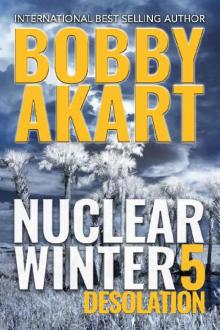 Nuclear Winter Desolation: Post Apocalyptic Survival Thriller (Nuclear Winter Series Book 5)
Nuclear Winter Desolation: Post Apocalyptic Survival Thriller (Nuclear Winter Series Book 5)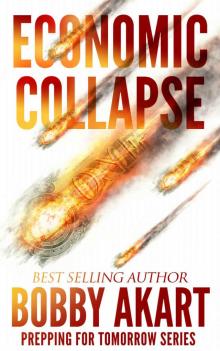 Economic Collapse (Prepping for Tomorrow Book 2)
Economic Collapse (Prepping for Tomorrow Book 2)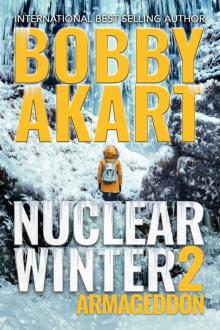 Nuclear Winter Armageddon
Nuclear Winter Armageddon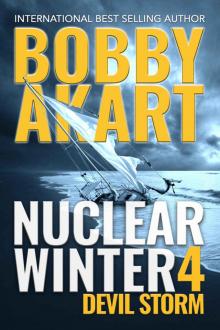 Nuclear Winter Devil Storm
Nuclear Winter Devil Storm Virus Hunters 3: A Medical Thriller
Virus Hunters 3: A Medical Thriller Doomsday Civil War: A Post-Apocalyptic Survival Thriller (The Doomsday Series Book 5)
Doomsday Civil War: A Post-Apocalyptic Survival Thriller (The Doomsday Series Book 5) Asteroid Destruction
Asteroid Destruction Geostorm the Shift
Geostorm the Shift Asteroid Discovery
Asteroid Discovery Virus Hunters 2: A Medical Thriller
Virus Hunters 2: A Medical Thriller Geostorm The Shift: A Post-Apocalyptic EMP Survival Thriller (The Geostorm Series Book 1)
Geostorm The Shift: A Post-Apocalyptic EMP Survival Thriller (The Geostorm Series Book 1) Asteroid Diversion
Asteroid Diversion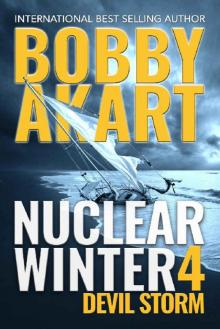 Nuclear Winter Devil Storm: Post Apocalyptic Survival Thriller (Nuclear Winter Series Book 4)
Nuclear Winter Devil Storm: Post Apocalyptic Survival Thriller (Nuclear Winter Series Book 4)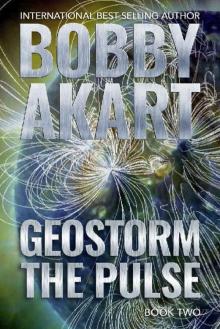 Geostorm The Pulse: A Post Apocalyptic EMP Survival Thriller (The Geostorm Series Book 2)
Geostorm The Pulse: A Post Apocalyptic EMP Survival Thriller (The Geostorm Series Book 2) Yellowstone: Survival: A Post-Apocalyptic Survival Thriller (The Yellowstone Series Book 4)
Yellowstone: Survival: A Post-Apocalyptic Survival Thriller (The Yellowstone Series Book 4)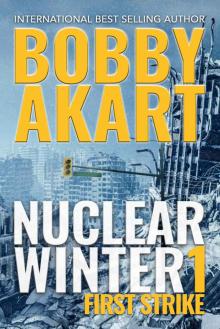 Nuclear Winter First Strike: Post-Apocalyptic Survival Thriller
Nuclear Winter First Strike: Post-Apocalyptic Survival Thriller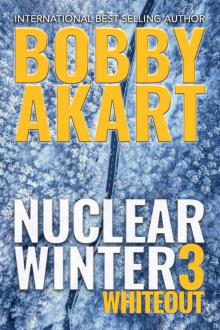 Nuclear Winter Whiteout
Nuclear Winter Whiteout Doomsday Anarchy
Doomsday Anarchy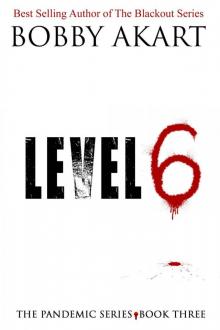 Pandemic: Level 6: A Post Apocalyptic Medical Thriller Fiction Series (The Pandemic Series Book 3)
Pandemic: Level 6: A Post Apocalyptic Medical Thriller Fiction Series (The Pandemic Series Book 3) Martial Law
Martial Law Odessa Reborn: A Terrorism Thriller (Gunner Fox Book 4)
Odessa Reborn: A Terrorism Thriller (Gunner Fox Book 4) New Madrid Earthquake
New Madrid Earthquake Beyond Borders: Post Apocalyptic EMP Survival Fiction (The Lone Star Series Book 2)
Beyond Borders: Post Apocalyptic EMP Survival Fiction (The Lone Star Series Book 2) The Blackout Series (Book 3): Turning Point
The Blackout Series (Book 3): Turning Point Patriot's Farewell: A Political Thriller Fiction Series (Boston Brahmin Political Thrillers Book 7)
Patriot's Farewell: A Political Thriller Fiction Series (Boston Brahmin Political Thrillers Book 7) Lines in the Sand_Post Apocalyptic EMP Survival Fiction
Lines in the Sand_Post Apocalyptic EMP Survival Fiction The Mechanics: A Post-Apocalyptic Fiction Series
The Mechanics: A Post-Apocalyptic Fiction Series The Loyal Nine
The Loyal Nine Axis of Evil
Axis of Evil Axis of Evil: Post Apocalyptic EMP Survival Fiction (The Lone Star Series Book 1)
Axis of Evil: Post Apocalyptic EMP Survival Fiction (The Lone Star Series Book 1) Lines in the Sand: Post Apocalyptic EMP Survival Fiction (The Lone Star Series Book 3)
Lines in the Sand: Post Apocalyptic EMP Survival Fiction (The Lone Star Series Book 3) Odessa Strikes
Odessa Strikes The Blackout Series (Book 4): Shiloh Ranch
The Blackout Series (Book 4): Shiloh Ranch Hornet's Nest: A Post Apocalyptic EMP Survival Fiction Series (The Blackout Series Book 5)
Hornet's Nest: A Post Apocalyptic EMP Survival Fiction Series (The Blackout Series Book 5) Yellowstone: Fallout: A Post-Apocalyptic Survival Thriller (The Yellowstone Series Book 3)
Yellowstone: Fallout: A Post-Apocalyptic Survival Thriller (The Yellowstone Series Book 3) Electromagnetic Pulse
Electromagnetic Pulse Texas Strong: Post Apocalyptic EMP Survival Fiction (The Lone Star Series Book 4)
Texas Strong: Post Apocalyptic EMP Survival Fiction (The Lone Star Series Book 4) Fifth Column_Post Apocalyptic EMP Survival Fiction
Fifth Column_Post Apocalyptic EMP Survival Fiction Patriot's Farewell
Patriot's Farewell Texas Strong_Post Apocalyptic EMP Survival Fiction
Texas Strong_Post Apocalyptic EMP Survival Fiction Pandemic: The Innocents: A Post-Apocalyptic Medical Thriller Fiction Series (The Pandemic Series Book 2)
Pandemic: The Innocents: A Post-Apocalyptic Medical Thriller Fiction Series (The Pandemic Series Book 2) Shiloh Ranch: A Post Apocalyptic EMP Survival Fiction Series (The Blackout Series Book 4)
Shiloh Ranch: A Post Apocalyptic EMP Survival Fiction Series (The Blackout Series Book 4) Cyber Attack
Cyber Attack Beyond Borders
Beyond Borders Choose Freedom: A Post-Apocalyptic Fiction Series (The Boston Brahmin Book 6)
Choose Freedom: A Post-Apocalyptic Fiction Series (The Boston Brahmin Book 6) False Flag
False Flag Turning Point: A Post Apocalyptic EMP Survival Fiction Series (The Blackout Series Book 3)
Turning Point: A Post Apocalyptic EMP Survival Fiction Series (The Blackout Series Book 3)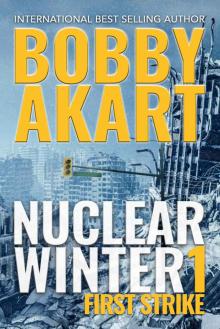 Nuclear Winter First Strike
Nuclear Winter First Strike Pandemic: Beginnings: A Post-Apocalyptic Medical Thriller Fiction Series (The Pandemic Series Book 1)
Pandemic: Beginnings: A Post-Apocalyptic Medical Thriller Fiction Series (The Pandemic Series Book 1) Devil's Homecoming: A Post Apocalyptic EMP Survival Fiction Series (The Blackout Series Book 6)
Devil's Homecoming: A Post Apocalyptic EMP Survival Fiction Series (The Blackout Series Book 6) The Blackout Series (Book 6): Devil's Homecoming
The Blackout Series (Book 6): Devil's Homecoming Yellowstone: Inferno: A Post-Apocalyptic Survival Thriller (The Yellowstone Series Book 2)
Yellowstone: Inferno: A Post-Apocalyptic Survival Thriller (The Yellowstone Series Book 2) Fifth Column: Post Apocalyptic EMP Survival Fiction (The Lone Star Series Book 5)
Fifth Column: Post Apocalyptic EMP Survival Fiction (The Lone Star Series Book 5) Yellowstone: Hellfire: A Post-Apocalyptic Survival Thriller (The Yellowstone Series Book 1)
Yellowstone: Hellfire: A Post-Apocalyptic Survival Thriller (The Yellowstone Series Book 1) The Blackout Series (Book 2): Zero Hour
The Blackout Series (Book 2): Zero Hour Suicide Six: Post Apocalyptic EMP Survival Fiction (The Lone Star Series Book 6)
Suicide Six: Post Apocalyptic EMP Survival Fiction (The Lone Star Series Book 6) Suicide Six_Post Apocalyptic EMP Survival Fiction
Suicide Six_Post Apocalyptic EMP Survival Fiction Zero Hour: A Post-Apocalyptic EMP Survival Fiction Series (The Blackout Series Book 2)
Zero Hour: A Post-Apocalyptic EMP Survival Fiction Series (The Blackout Series Book 2) Beyond Borders_Post Apocalyptic EMP Survival Fiction
Beyond Borders_Post Apocalyptic EMP Survival Fiction Pandemic: Quietus: A Post-Apocalyptic Dystopian Fiction Series (The Pandemic Series Book 4)
Pandemic: Quietus: A Post-Apocalyptic Dystopian Fiction Series (The Pandemic Series Book 4) 36 Hours: A Post-Apocalyptic EMP Survival Fiction Series
36 Hours: A Post-Apocalyptic EMP Survival Fiction Series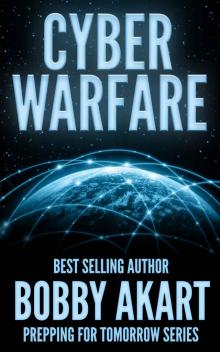 Cyber Warfare
Cyber Warfare